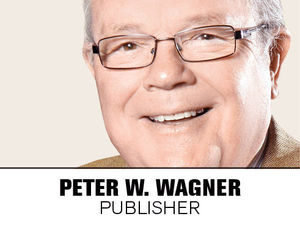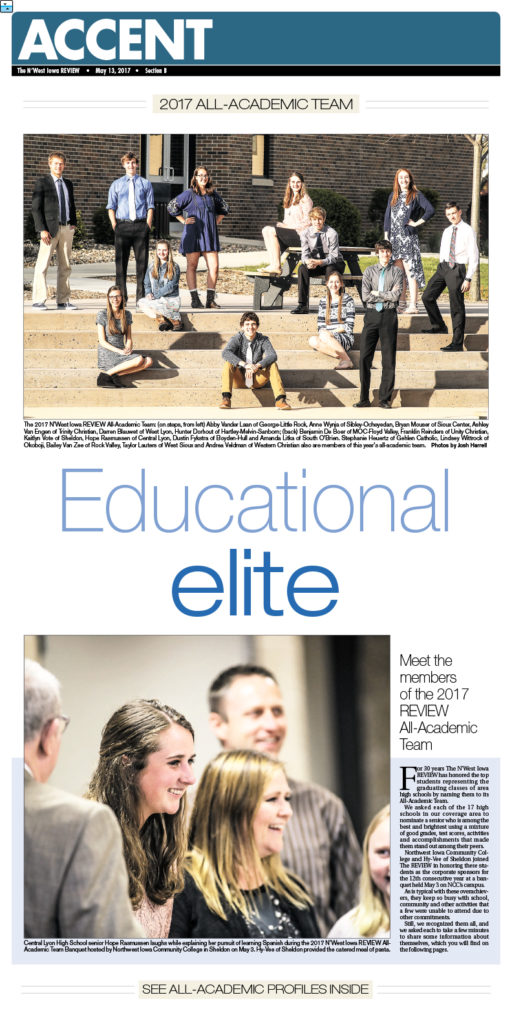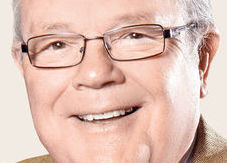By Peter Wagner
There are times when It seems that every local business is turning to the internet in the belief it is free and the only way to connect with younger Americans. It is a movement, say so-called experts, that will bring an end to the newspaper industry.
But why is the negative emphasis always on newspapers? I don’t remember when I last listened to a traditional radio station. I’ve got Sirius XM in all my vehicles and on my computer at the office. With a just a few keystrokes I can bring Pandora up on my household computer and have any kind of music I desire flowing into every room of my home.
 I hardly ever watch traditional network television. All my favorite television programs are shown on one of my cable channels: the Travel Channel, A&E, USA. the Food Channel or Netflix. Television news coverage from our two closest over-the-air stations means little since those stations concentrate on the events taking place in their metro city and hardly ever report on anything happening in my local market.
I hardly ever watch traditional network television. All my favorite television programs are shown on one of my cable channels: the Travel Channel, A&E, USA. the Food Channel or Netflix. Television news coverage from our two closest over-the-air stations means little since those stations concentrate on the events taking place in their metro city and hardly ever report on anything happening in my local market.
Recently I signed up for Facebook and was quickly deluged by my new “friends” with dozens of suggested musical snippets I should watch on YouTube. I found myself clicking around my computer keyboard long past bedtime that night discovering concert quality musical selections by some of my favorite artists. Who needs to buy musical DVD recordings?
So why does the media – especially metro market newspapers – only forecast tough times for the newspaper industry? Perhaps it is because although we deal in the creation and sale of quality advertising, we don’t do well advertising our unique story. We’re like the cobbler whose kids go to school in shoddy shoes.
The total 2018 dollars spent on advertising is forecast to increase by 7.6%. The greatest amount of those dollars will come from the 98 percent of retailers that are considered small businesses.
That potential increase is the good news. The bad news is the amount spent with newspapers will fall 10.3%.
NEWSPAPERS CREATE COMMUNITY
America’s towns and cities need newspapers if they want a real sense of community.
There was a time when most towns had five strong anchors to give local citizens a sense of belonging: Local banks, an active Chamber of Commerce, a good local school system, a strong retail shopping area and the local newspaper.
Today the newspaper is the only one of the five that still exists in many smaller towns. The banks have become nothing more than branches of conglomerates that make most decisions from many miles away. Wal-Mart and other box stores have usurped the role of locally involved family-owned businesses and the loss of those hometown stores has led to the closing of many local Chambers of Commerce.
Local schools, meanwhile, aren’t local anymore. The future suggests they will continue to consolidate, taking the heart and soul out of towns that once had their own school buildings, sports programs and local supporters that regularly gathered together to cheer on their local football, basketball or baseball team.
 The local newspaper is the only promoter of community that still exists. Newspapers are the business and public service cheerleaders. Newspapers continue to be the explainers of how some specific government actions affect the community. Local newspapers are the original recorders of every town or city’s social and cultural history.
The local newspaper is the only promoter of community that still exists. Newspapers are the business and public service cheerleaders. Newspapers continue to be the explainers of how some specific government actions affect the community. Local newspapers are the original recorders of every town or city’s social and cultural history.
Without newspapers America will eventually be nothing more than a collection of people simply living in the same geographic area.
That’s why it is our responsibility, as publishers, editors and sales representatives, to teach our readers and advertisers the importance of local. The internet, Facebook and all the other digital media are wonderful for reaching one-time customers two hundred miles away. But history has proven that 75% of every advertiser’s actual buyers live within 25 miles of home. They are folks who like where they live and want to keep where they live the way it has always been.
The question is, do your potential advertisers want to reach 10,000 people who may or may not come into their store or, through their local printed paper, dozens or more buyers they know will?
BUT NEWSPAPERS NEED MONEY
But the real problem continues to be finding more newspaper revenue. We cannot publish quality papers without a steady, growing stream of revenue. Nor can we expect our sales team to bring in those important dollars without the creative ideas, management direction, regular training and the dedicated support of every one of the newspaper’s employees.
Newspapers must be the local market’s leader. That means regularly publishing unique information sections designed to motivate local citizens to lift up, reach out and wonderfully improve every aspect of the place where they’ve chosen to live.
The paper’s editor and section leaders can help with fresh ideas for celebrating a community in the paper’s circulation area. We do that at The N’West Iowa REVIEW in a hundred different ways:
One way is by publishing weekly tabloids reporting exclusively on what’s new and exciting in one of the 17 consolidated school districts in our circulation area. We report on the 14 public consolidated school districts twice each school year and the three regional Christian high schools three times.
Another is our annual weekly summer broadsheet sections focusing on the 27 communities we regularly cover. A few years ago the theme was “Heart and Soul”. Each section featured a wonderful essay by a local citizen on why he or she preferred to live in that community. The balance of the full-color section was filled with pages of photos representing everyday activities in that town.
Another year we featured every church in our five counties. Each story shared the church’s unique history, background information on the pastor, a listing of the local church board, the church’s service schedule and some interesting facts about the church. Still another year we honored each community’s heroes with photos and stories about local individuals who have excelled in government, the military, education, religion or some other aspect of community life.
The featured communities have populations as small as 400 citizens. But community building community is our foremost responsibility. And community sections sell. The weekly sections always add at least $2,000 to $4,000 additional dollars to that week’s sales report.
A third way to partner with the community is to publish sections such as our All-REVIEW football, volleyball, boy’s and girls’ basketball, baseball and softball sections. Each section features a unique cover, coach of the year and our sports editor’s choice for first and second All-REVIEW teams. The ad revenue comes from process color quarter-page congratulatory ads from various businesses in each honoree’s hometown.
Finally, consider The N’West Iowa REVIEW Academic All-Stars recognition. Complete with a banquet, featured stories on each student and the presentation of framed certificates for each honoree, this section lifts up the best students in all 17 area high school graduating classes and is supported by progressive businesses in the communities that make up each school district.
Content, community commitment and promotion. These are the steps necessary to maintain the importance of your publication in your local market. Think local in your sales. Be the local leader in everything you do.
 Nevada Press Association The best in Nevada journalism since 1924
Nevada Press Association The best in Nevada journalism since 1924
